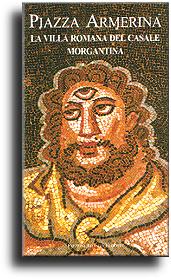
Authors: Maria Rosaria Falcone e Romilda Nicotra
Available in English, French, German and Italian language.
Information about how to purchase this book
Renown for the splendid mosaics, Piazza Armerina boasts a conspicuous production of wheat, olives, fruit, and almonds. Cattle breeding and sheep farms are relevant, and the deriving products can be tasted during the annual Fairs held in the months of May and September.
The name Piazza derives from the Latin term Platea or (Platia), that means "square, market". The appositive Armerina was added in 1862 because of the proximity of the homonymous mountain.
The first inhabited center rose in the VII century B.C., and it was quartered by the Greeks, Romans, and Byzantines.
During the Middle Ages, it was conquered by the Normans, in the person of Count Ruggero of Altavilla, who allowed the installation of a Lombard colony.
In 1150, the suburb was destroyed, and only in 1163 it was rebuilt by will of King Guglielmo I, who ordered the erection of town walls and fortified towers.
Under the Aragonese dynasty, the first Sicilian Parliament was summoned in occasion of the Guerra del Vespro (war of the Vespro). In 1589, the first University was established thanks to the influence of the Jesuits, that was operative until 1767, when this religious order was exiled from Sicily.
The most important monuments are the Church of S. Pietro of 1500, rich of marble altars and arches, and the baroque Dome and the bell tower in Gothic-Catalan style erected in 1604, preserving paintings of the XVI century and two wooden engraved organs.
Among the urban structures, the most noteworthy are the Spinelli Castle of the XII century, and the Norman style Priorate of S. Andrea built in 1096.
The bordering locality called Mountain of Marzo there are Greek and prehistoric settlement and in the town district Casale hosts the luxurious Roman Villa del Casale of the IV century A.D., preserving a myriad of beautiful mosaic pavements, symbol of an extremely refined imperial culture.
|











 Piazza Armerina
Piazza Armerina